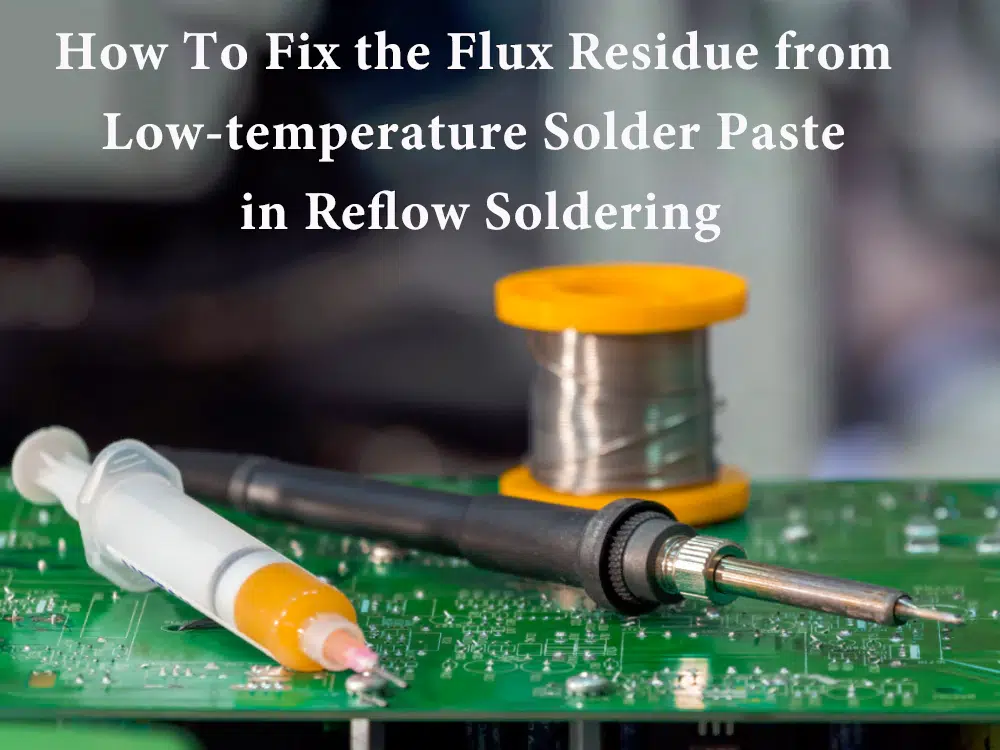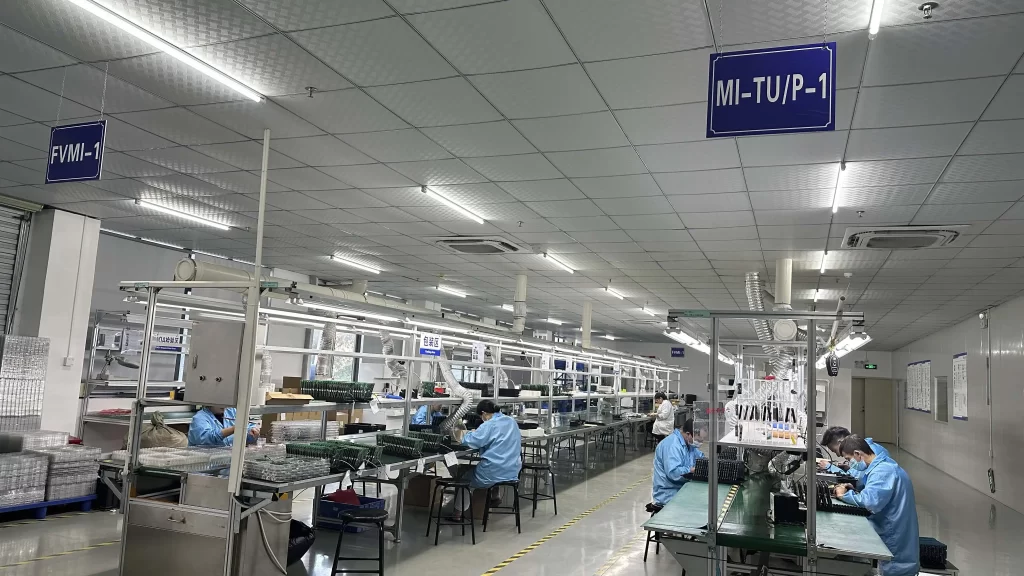
In an electronics manufacturing facility, a new low-temperature solder paste for reflow soldering is used. Some flux is remained on solder joints. These residues formed some noticeable white spots around the solder joints, affecting the reliability and appearance of the solder joints. In this article, we focus on 3 parts: What is flux residue? Why do flux residues occur? How to fix flux residue?
The flux residue caused by low-temperature solder paste during reflow soldering refers to the fact that the flux used in the soldering process cannot be completely volatilized or decomposed, resulting in a certain amount of flux remaining in the solder joint or soldering area.
1.Electrical performance issues
Flux residues can negatively affect the electrical performance of solder joints and circuit boards. Besides, it can cause shorts or poor conduction between circuit boards as well, affecting the proper function of the circuit. In addition, the stability and reliability of solder joints might also be impacted, leading to increased resistance or failure of solder joints.
2. Reliability issues
The reliability of solder connections can be greatly affected. Flux residues may cause corrosion of solder joints, metal ion migration or oxidation, thereby reducing the reliability of solder joints. This leads to cracking of solder joints, loosening or failure under high temperature or vibration conditions.
3.Difficulty in cleaning
If the flux residue is difficult to remove, it may not only increase the complexity and difficulty of the cleaning process, but also adversely affect subsequent process steps, such as coating, packaging or testing. In addition, the residues may also reduce the surface adhesion after cleaning, affecting the quality of subsequent coating or bonding.
Also read: What’s the type of PCB surface treatment?
4.Appearance and visibility issues
Flux residue may leave unclean marks or bubbles on the soldering surface. This may affect the appearance quality of the product and reduce the visibility of solder joints. In some applications, appearance and visibility are important factors, so flux residue may be considered a quality issue.
Here are some factors that can cause flux residue:
1.Incompatible flux ingredients
Low-temperature solder paste usually suits a lower temperature soldering process, while traditional high-temperature solder may contain flux ingredients that are difficult to completely volatilize or decompose during low-temperature soldering.
Therefore, it is critical to choose a flux that is compatible with low-temperature solder pastes to ensure proper volatilization or decomposition of the flux during reflow.
2. Improper temperature control
Low-temperature solder paste needs to be reflowed in a suitable temperature range to ensure the quality of solder joints and the complete volatilization of flux. If the reflow temperature is too high or too low, the flux may not evaporate completely or decompose, resulting in the formation of residues.
3.Mismatched material or quality problems
Quality problems of low-temperature solder paste, flux, or other related materials may also cause flux residues. For example, if the selected low-temperature solder paste is not compatible with the flux used, or there are quality problems in the material itself, it may cause the flux to not completely volatilize or decompose.

After we have learned the resons of flux residue result from the low-temperature solder paste. There are some measures can be employed to fix the flux residue issue.
1.Control reflow soldering parameters
Correctly control the temperature and time parameters of reflow soldering to ensure that the flux can be fully volatilized and decomposed. Too high a temperature may cause incomplete volatilization of the flux, while too low a temperature may not melt and decompose the flux. Adjust the temperature curve and time of the reflow oven according to the requirements of low-temperature solder paste and flux.
2. Optimize the cleaning process
Thoroughly clean the soldered PCB to remove flux residues. Choose an appropriate cleaning agent and cleaning method to ensure that the cleaning agent can effectively remove the flux and have good compatibility with PCBs and components. For solder joints or local residues that are difficult to clean, ultrasonic cleaning or other special cleaning techniques can be considered to solve it.
Also read: How to maintain and clean PCB stencils for consistent performance?
3.Improve quality control and inspection
Strengthening the quality control process to ensure the correct application of low-temperature solder paste and the stability of the soldering process. Use appropriate inspection methods and tools, such as x-ray inspection or microscopy, to identify flux residue issues and correct them as soon as possible.
Also read: Four PCBA inspection items you need to know
4.Strengthen supply chain management
Cooperating with suppliers to ensure that the purchased low-temperature solder paste and flux meet the requirements and have quality and reliability guarantees. Establish a sound supply chain management system to ensure the stable supply and quality consistency of raw materials.
5.Training and technical support
Training our operators to understand the characteristics of low-temperature solder paste and flux and the correct use methods. Work with your supplier or professional technical support personnel for technical support and advice to resolve flux residue issues.
6.Select the appropriate low-temperature solder paste and flux
Ensure that the selected low-temperature solder paste and flux are compatible with each other, and the flux has good volatility and decomposition. Choose proven products and ensure they meet welding requirements and standards.